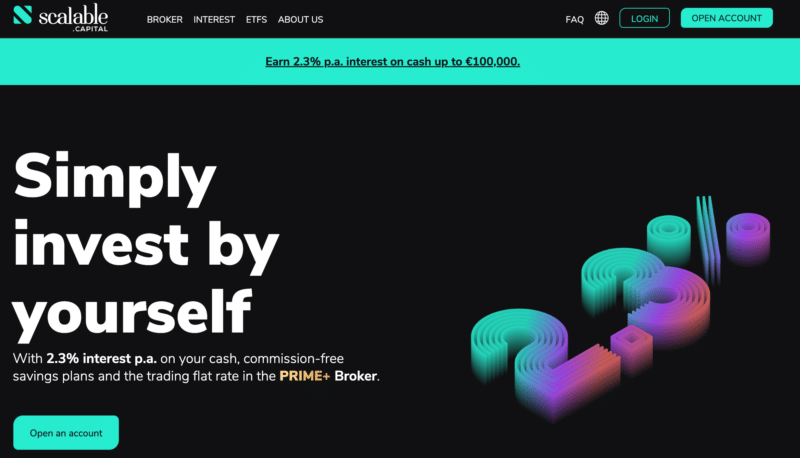 Options trading often boils down to one critical decision: should you let your position expire or close it early? This choice is relevant for both buyers and sellers of calls and puts. In this article, I’ll break down the scenarios for each type of option—long calls, short calls, long puts, and short puts—and provide practical tips for making the best decision.
Options trading often boils down to one critical decision: should you let your position expire or close it early? This choice is relevant for both buyers and sellers of calls and puts. In this article, I’ll break down the scenarios for each type of option—long calls, short calls, long puts, and short puts—and provide practical tips for making the best decision.
The Four Scenarios
1. Long Call Options
When you buy a call option, you’re paying for the right to buy the underlying stock at the strike price.
- If Held to Expiry:
- In the Money (ITM): You can exercise the option to buy the stock at the strike price, locking in the intrinsic value (difference between stock price and strike price).
- Out of the Money (OTM): The option expires worthless, and your loss is limited to the premium paid.
- If Closed Early:
Selling the option at its current market price lets you capture both intrinsic value and remaining time value. This strategy can protect against the risk of stock price reversal.
2. Short Call Options
Selling a call obligates you to sell the underlying stock at the strike price if the buyer exercises the option.
- If Held to Expiry:
- ITM: You must sell the stock at the strike price, resulting in a loss if the market price is higher.
- OTM: The option expires worthless, and you keep the premium received as profit.
- If Closed Early:
Buying back the call caps your losses if the stock price is rising. However, it may also limit potential profits if the stock reverses and the option becomes OTM.
3. Long Put Options
Buying a put gives you the right to sell the underlying stock at the strike price.
- If Held to Expiry:
- ITM: You can sell the stock at the strike price, profiting from the difference between the strike price and market price.
- OTM: The option expires worthless, and your loss is the premium paid.
- If Closed Early:
Selling the put at its current market price lets you capture remaining value, especially if there’s significant time value left. This avoids the risk of the stock reversing direction.
4. Short Put Options
Selling a put obligates you to buy the underlying stock at the strike price if the buyer exercises the option.
- If Held to Expiry:
- ITM: You must buy the stock at the strike price, potentially incurring a loss if the market price is lower.
- OTM: The option expires worthless, and you keep the premium received.
- If Closed Early:
Buying back the put prevents further losses if the stock price is falling, but it may cost more than letting it expire if the stock stabilizes.
Key Factors to Consider Across Scenarios
1. Time Value
- For long options, closing early can capture the remaining time value.
- For short options, time value decays in your favor, so waiting until expiry can be beneficial unless the position moves ITM.
2. Stock Price Movement
- Predicting the stock’s direction is critical:
- For calls, a bullish move increases value for long positions and risk for short positions.
- For puts, a bearish move does the same.
3. Premium Received or Paid
- Sellers (short calls/puts): The premium received offsets some losses if the option moves ITM.
- Buyers (long calls/puts): The premium paid is the maximum risk for OTM options.
Example Scenario: Short Call on Amazon
Let’s use Amazon (AMZN) as an example to break down this decision in a simple, realistic way.
You sold 20 short call options on Amazon with a strike price of $200, and they expire in three days. Amazon’s current stock price is $210, meaning the options are in the money (ITM). When you sold the options, you earned a premium of $2 per option (a total of $4,000).
Now you’re deciding whether to:
- Let the options expire and settle them at expiry, or
- Buy them back today to close the position and limit your risk.
Key Factors to Consider
1. Premium Received
When you sold the options, you earned $2 per option, giving you $4,000. This premium offsets some of your potential losses and is a critical part of your calculation.
2. Current Option Price
The market price for the call options today is $11 per option, reflecting their intrinsic value (stock price minus strike price) and a small remaining time value.
3. Intrinsic Value vs. Time Value
Intrinsic Value: The amount by which the stock price exceeds the strike price. For these options:
$210 (current price) – $200 (strike price) = $10 per option.
Time Value: The extra cost due to time left until expiration. In this case:
$11 (current price) – $10 (intrinsic value) = $1 per option.
If you let the options expire, the time value of $1 will decay to zero, saving you that extra cost.
Scenario Analysis
Option 1: Let the Options Expire
If you let the options expire, the buyer will exercise them because they are ITM. You will need to deliver the shares at $200 per share.
- Intrinsic Loss Per Option: $210 (market price) – $200 (strike price) = $10.
- Total Loss: $10 × 20 contracts × 100 shares = $20,000.
- Adjusted for Premium Received: $20,000 – $4,000 = $16,000 (net loss).
Option 2: Buy Back the Options Today
If you buy the options back at the current price of $11, you’ll pay:
- Cost Per Option: $11.
- Total Cost: $11 × 20 contracts × 100 shares = $22,000.
- Adjusted for Premium Received: $22,000 – $4,000 = $18,000 (net loss).
Comparison of Outcomes
| Scenario | Total Loss | Premium Offset | Net Loss |
|---|---|---|---|
| Let Options Expire | $20,000 | $4,000 | $16,000 |
| Buy Back Today | $22,000 | $4,000 | $18,000 |
In this scenario, letting the options expire is the more cost-effective choice, saving you $2,000. However, this assumes that Amazon’s stock price does not rise significantly before expiry. If you believe there’s a strong chance of further price increases, buying back the options might be worth the extra cost to avoid potential larger losses.
Key Risks and Considerations
- Stock Price Movement: If Amazon’s stock price rises above $210 in the next three days, your losses will increase. For example, at $215, your total loss becomes $15 per share × 20 × 100 = $30,000 before premiums.
- Time Decay (Theta): With only three days left, the time value of $1 per option will disappear. By letting the options expire, you avoid paying for this time value.
- Risk Tolerance: If you’re uncomfortable with the possibility of Amazon rising sharply, buying back now eliminates your risk of further losses.
Practical Tips for Managing Options
- Set Alerts: Use trading platforms to set alerts for critical price levels. These help you react quickly to market changes without constantly monitoring the stock.
- Roll Positions: If you’re concerned about short-term price movements, consider rolling the position to a later expiry date. For example:
- Long Options: Roll to give the stock more time to move in your favor.
- Short Options: Roll to reduce immediate risk and collect additional premium.
- Hedge Your Position: Offset risks by hedging with shares or other options:
- Long options can be hedged with short options (e.g., a covered call or protective put).
- Short options can be hedged by holding shares of the underlying stock.
Tax Implications: Exercise vs. Closing Early
In Europe, tax treatment varies by country, but generally, exercising an option to sell or buy the underlying stock triggers a separate taxable event, which may be taxed as a capital gain or loss based on the stock’s cost basis. In contrast, closing the option early (buying or selling the option itself) simplifies tax reporting since only the option transaction is taxed. Closing early can also accelerate income recognition into the current tax year, while exercise may offer more flexibility for offsetting gains or losses depending on the timing.
Conclusion
The decision to let options expire or close them early depends on the specific scenario and your market outlook. Use tools like alerts, hedging, and rolling to manage your risk effectively. Whether you’re buying or selling calls or puts, a clear understanding of the dynamics at play will help you make the best decisions for your portfolio.
What’s your preferred strategy for managing options positions? Share your thoughts or questions in the comments!
 I believe a few sectors will flourish under the Trump administration, having been suppressed under the Democrats for the past years. I’m also taking into consideration new technological advances like AI, as well as geopolitical issues like the shaky relationship between China and the USA, as well as the unpredictability of Russia.
I believe a few sectors will flourish under the Trump administration, having been suppressed under the Democrats for the past years. I’m also taking into consideration new technological advances like AI, as well as geopolitical issues like the shaky relationship between China and the USA, as well as the unpredictability of Russia. Scalable Capital
Scalable Capital



